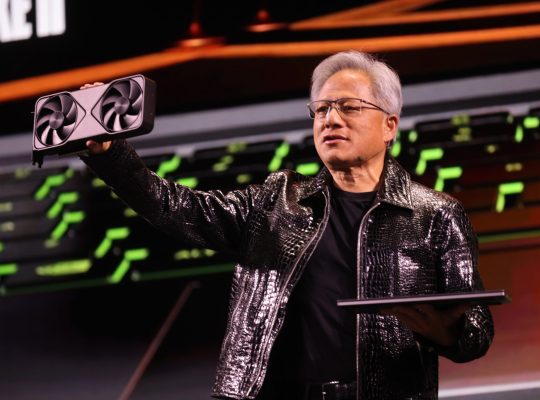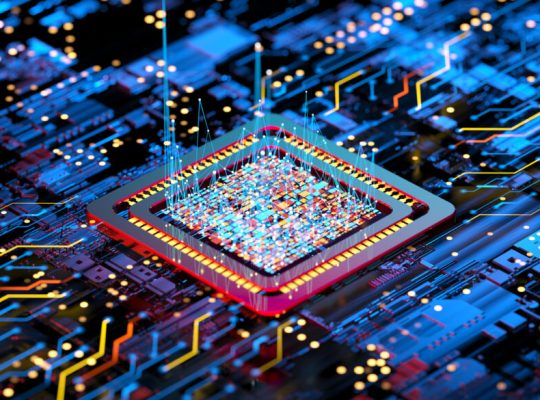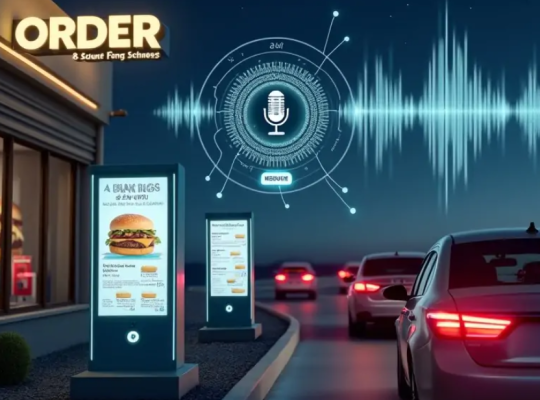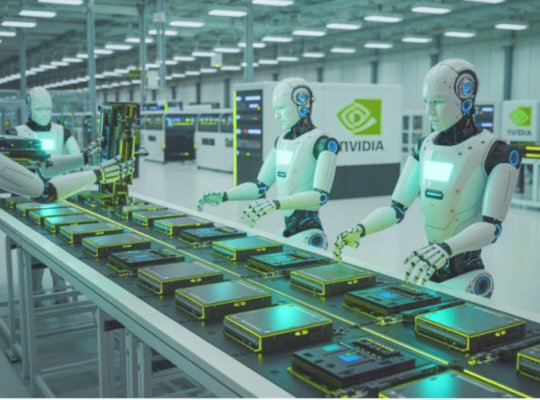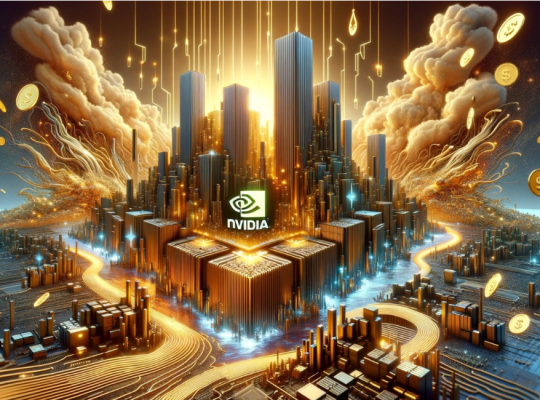In 2025, Nvidia has continued to solidify its position as the dominant force in AI and accelerated computing, with major announcements spanning next-generation hardware, software ecosystems, and strategic partnerships. The key theme has been the shift towards “physical AI” and the democratization of AI development.
Here’s a breakdown of the key news and announcements from Nvidia in 2025:
1. Next-Generation Hardware and Architecture
- Blackwell Dominance and Expansion: The Blackwell architecture, which began shipping in late 2024, has been the engine of Nvidia’s continued growth in 2025. It now accounts for a significant portion of the company’s data center revenue, with major cloud providers rapidly deploying the chips.
- Blackwell Ultra: Nvidia introduced the Blackwell Ultra family of accelerators, a refresh of the Blackwell architecture. These chips are specifically designed for “agentic AI” and reasoning models, boasting up to 15 petaFLOPS of FP4 performance and up to 288GB of HBM3e memory per chip. The Blackwell Ultra is positioned as a major leap for large-scale inference workloads.
- Vera Rubin and Beyond: At GTC 2025, Nvidia unveiled its future roadmap, announcing the Vera Rubin chip family for a 2026 release. Named after the astronomer, this will consist of a custom Nvidia CPU (Vera) and a new GPU (Rubin). An even more powerful Rubin Ultra is planned for 2027. These chips are a clear sign of Nvidia’s commitment to a rapid, two-year product cycle for its data center products.
- GeForce RTX 50 Series: For the consumer market, Nvidia launched its GeForce RTX 50 series GPUs, built on the Blackwell architecture. The new lineup includes the RTX 5090 and 5080. These cards are the first to feature GDDR7 memory and an updated 12V-2×6 power connector. They also introduce DLSS 4 and RTX Neural Shaders, bringing advanced AI capabilities directly to PC gaming and content creation.
2. Software and Ecosystem Developments
- Physical AI and Robotics: Nvidia’s vision for 2025 and beyond is “physical AI”—AI that can reason, plan, and act in the real world. To support this, Nvidia launched the Isaac GR00T N1, an open-source foundational model for humanoid robotics, and new simulation frameworks. The Cosmos platform was also announced, a “world foundation model” that enables developers to train robots and autonomous vehicles in realistic, physics-based simulations.
- Agentic AI Blueprints: Nvidia is expanding its software offerings to cater to the growing trend of AI agents. The company launched AI Blueprints, which are open-source frameworks and reference architectures for building custom AI agents for tasks like customer support and supply chain optimization. These blueprints integrate with popular AI agent platforms like CrewAI and LangChain.
- AI for the Desktop: Recognizing the need for local AI development, Nvidia introduced Project DIGITS, a personal AI supercomputer later named DGX Spark. This compact device is powered by a scaled-down Grace Blackwell Superchip (GB10) and is designed to allow developers to fine-tune and run large AI models locally. A more powerful workstation version, the DGX Station, was also announced.
- NIM Microservices: Nvidia’s NIM microservices are now being offered for RTX PCs, providing a set of AI foundation models that creators can use to generate digital humans, podcasts, images, and videos.
3. Strategic Partnerships and Market Presence
- Cloud and Enterprise Partnerships: Nvidia has announced a number of new collaborations to expand its market reach. Partnerships with companies like Cisco and BlackRock focus on developing AI-native wireless network stacks for 6G and creating blueprints for more efficient, energy-conscious AI data centers.
- Automotive and Autonomous Vehicles: Nvidia’s DRIVE platform continues to be a central part of its strategy. The company has partnered with General Motors and other automotive giants to build self-driving car fleets and is projecting significant revenue growth in this sector.
- China Market Strategy: Nvidia has successfully navigated U.S. export restrictions by offering compliant chips like the H20. Following a temporary ban in early 2025, sales have resumed under a licensing framework. To meet strong demand from Chinese tech giants, Nvidia has placed a new order for 300,000 H20 chips, while also introducing a new, compliant Blackwell variant called the B30.
4. Financial and Business News
- Record-Breaking Financials: Nvidia’s financial performance has been stellar throughout 2025, driven by overwhelming demand for its data center GPUs. The company reported a significant year-over-year increase in data center revenue, and its stock price has surged.
- Strategic Acquisitions: Nvidia has continued its strategy of acquiring smaller, innovative software startups. This year, the company acquired Gretel (a synthetic data AI startup), Lepton AI (a GPU capacity provider), and CentML (an AI model optimization software company), all aimed at strengthening its software and services ecosystem.
- Executive Stock Sales: Nvidia CEO Jensen Huang made a series of planned stock sales throughout the year, which were part of a prearranged 10b5-1 trading plan. These sales are a standard procedure for company executives and are not indicative of any negative outlook for the company.











